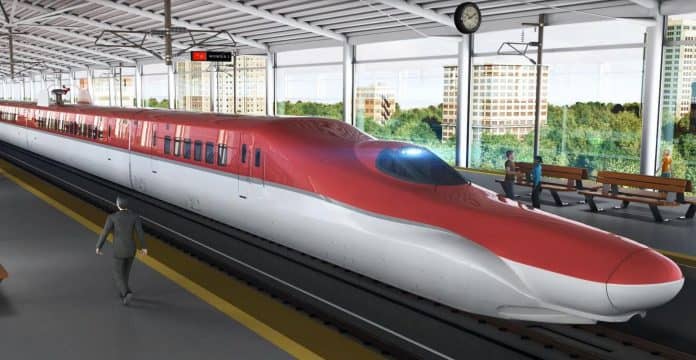
Railway Minister Ashwini Vaishnaw provided an exciting update on the progress of the Mumbai-Ahmedabad Bullet train project. In a recent video shared on social media, he showcased India’s remarkable achievement of developing the country’s first ballastless track system specifically designed for the bullet train.
Vaishnaw proudly announced that significant milestones have been reached, with 295.5 km of piers and 153 km of viaducts already completed. This accomplishment marks a major step forward in realising this high-speed rail corridor.
The video, shared on a popular online platform, showcased the intricate development of the special J-slab ballastless track system connecting the two bustling cities. The National High-Speed Rail Corporation Limited (NHSRCL) has diligently completed the viaduct work along the 153 km stretch of the project, which boasts a speed capacity of 320 mph. Additionally, NHSRCL has successfully finished the construction of 295.5 km of piers along the 508 km-long corridor. The project remains on track to become operational by 2026.
Implementing the ballastless track system is a significant stride in railway technology. This innovative approach involves using pre-cast track slabs equipped with advanced fastening devices and rails, known as the J-slab system. These track slabs are meticulously placed on a reinforced concrete (RC) track bed and cement asphalt mortar, constructed on-site to create up and down-track lines on the viaduct’s top.
These track slabs were cast in two dedicated facilities located in Anand and Kim, Gujarat. This meticulous manufacturing process ensures the highest quality and precision required for the bullet train’s smooth and efficient operation.
The Mumbai-Ahmedabad High-Speed Rail Corridor project, launched in September 2017 by Prime Minister Narendra Modi and his then-Japanese counterpart Shinzo Abe, holds immense promise for transforming India’s transportation landscape. With an estimated cost of ₹1.08 lakh crore, the project involves a shareholding pattern where the central government contributes ₹10,000 crore, while Gujarat and Maharashtra each contribute ₹5,000 crore. The remaining funding is secured through a low-interest loan of 0.1 per cent from Japan.
Completing the ballastless track system and the progress made in pier and viaduct construction signify the commendable efforts undertaken to realize this ambitious high-speed rail project. As the Mumbai-Ahmedabad Bullet train project continues to pave the way for enhanced connectivity and efficient transportation, it sets the stage for a future where India embraces advanced railway technology to meet the growing demands of its populace.



